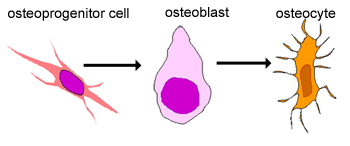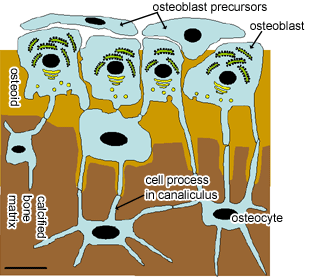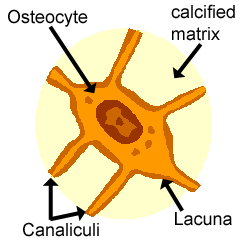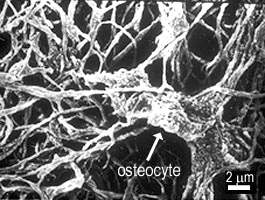Cells that are involved in remodelling bone: Osteoclasts
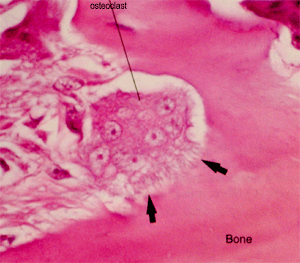
This is a picture of an osteoclast sitting in a 'Howship's lacuna' in the endosteum. These recesses are areas of bone that the osteoclasts have eroded away. Can you identify the osteoclast, and its 'ruffled border' which is full of fine finger like projections that insert into the bone matrix. How man nuclei does the osteoclast have? (Taken from Essential Histology, David NcCormack).
Osteoclasts are secretory, and have prominent Golgi apparatus, and vesicles. They secrete enzymes such as carbonic anhydrase which acidifies the matrix, and causes it to decalcify, and hydrolyses, which break down the matrix once it is decalcified. Other cell types help to phagocytose and get rid of the debris.
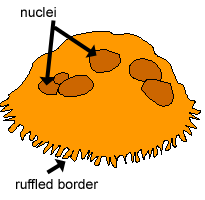
Osteoclasts are large multinucleated cells, with a 'ruffled border' that resorb bone matrix, as shown in the diagram above. They are important for remodelling, growth and repair of bone. (clast - greek 'to break').
Osteoclasts are not derived from osteoprogenitor cells. They are derived from blood monocytes/macrophages which are derived from haemopeoitic cells in the bone marrow. The precursors are often released as monocytes into the blood stream and they then collect at sites of bone resorption, where they fuse to form multinucleated osteoclasts, stick to the surface of bone, and break down the bone matrix.
Bone re-modelling is necessary for growth: -
1. Mechanical stresses on the skeleton cause release of calcium, that stimulate bone-remodelling.
2. Hormones also control bone re-modelling. Parathyroid hormone stimulates bone resorption. and calcitonin inhibits resorption.
